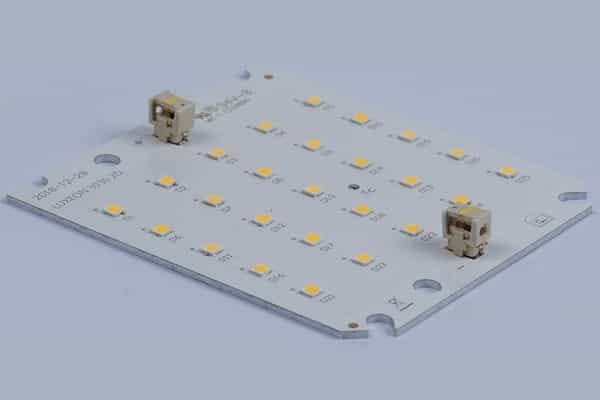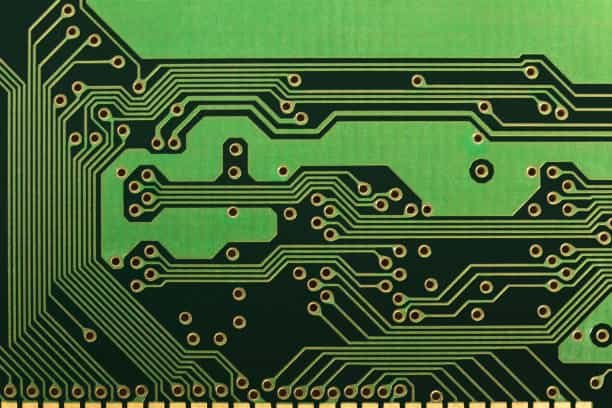Aluminum PCB Board Manufacturing Service
Aluminum PCB Prototype | MCPCB | Single-sided Aluminum PCB | Double-sided Aluminum PCB | Multilayer Aluminum PCB | LED Aluminum Base PCB | COB Aluminum PCB | High Thermal Conductivity Aluminum PCB | Ultra-long Aluminum Substrate PCB
Home » PCB Manufacturing » Aluminum PCB
Aluminum PCBs are the most widely used and cost-effective metal core PCBs. It is made of the base material of aluminum core and standard FR4, allowing efficient heat dissipation while cooling components and improving the product's overall performance. Aluminum core PCBs are considered a solution for high-power applications.
Aluminum PCB Manufacturer - JHYPCB
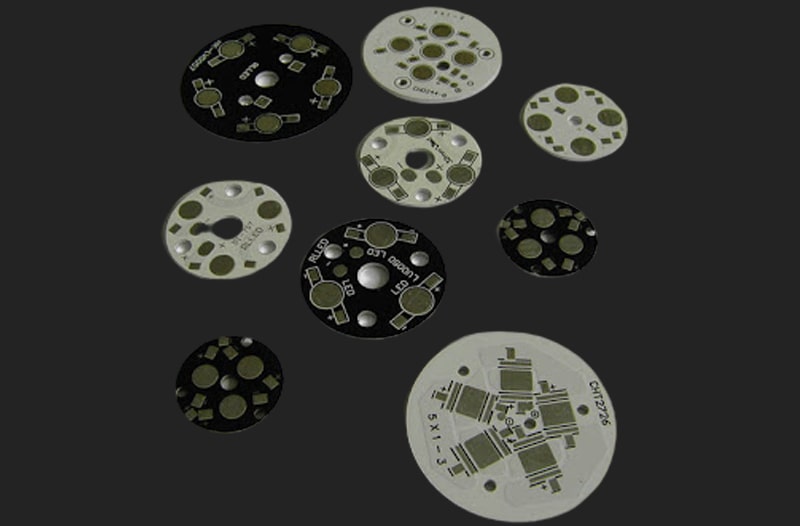
Metalcore PCBs have gotten massive attention due to their heat dissipation features and durability. Aluminum PCB is the most prevalent metal core PCB nowadays. It is used for many applications, but the most common form is in the LED circuit and other high-power circuits. Today, we are going to discuss Aluminum PCBs in detail.
What Is Aluminum PCB?
Aluminum Printed Circuit Board, Recognized Best Solutions for High Power and High Thermal Conductivity
Aluminum PCB is just like a common PCB; the only difference is in the base material. The base material in the aluminum PCBs is aluminum, which has more excellent heat dissipation capability, durability, and dimension stability. Aluminum PCB also called MCPCB (Metal core PCB), IMS (Insulated Metal Substrate), Aluminum Substrate PCB, Aluminum Core PCB, Aluminum Clad PCB, LED Aluminum PCB, Aluminum PCB for LED, Aluminum Base PCB, etc.
Normal PCBs cannot handle high temperatures, and due to high heat-dissipating components, they bend quickly. Therefore, it’s necessary to use aluminum PCB where high temperature or heat dissipation is expected.
Aluminum Based PCBs are a unique metal-based copper clad laminate. These types of Printed Circuit Boards have good thermal conductivity, electrical insulation, and excellent machining performance.
According to the different design structures and application scenarios of aluminum PCB, there are mainly single-sided aluminum PCB, double-sided aluminum PCB, Flexible aluminum PCB, mixed aluminum PCB, multi-layer aluminum PCB, through-hole aluminum PCB, and so on.
At present, aluminum substrate PCB is considered as the solution for high-power applications, such as for LED street lighting, car headlights, LED high bay lights etc.
As a printed circuit board manufacturer in China, JingHongYi PCB has rich experience in manufacturing aluminum PCB boards. It provides customers with high-quality aluminum substrate Manufacturing and one-stop aluminum PCB turnkey assembly services, prompt delivery on time, and competitive prices.
Advanced Learning
Aluminum Base PCB Design
Aluminum PCB Stack up, Structure and Layers
Aluminum PCB consists of three layers: the copper layer, dielectric layer, and aluminum base layer. There can be a fourth layer, which is known as the aluminum base membrane layer. The membrane layer protects the aluminum from scraping, scratches, and unwanted etching.
Aluminum PCB Structure
- Copper Layer (Circuit Layer): At the top of the aluminum PCB, there is a copper layer, which creates the circuit. The layer is common in all types of PCBs, including FR-4. It offers the electrical connection and conductivity of current among the components.
- Dielectric Layer: Aluminum can also conduct electricity; therefore, a dielectric material is used between the copper layer and the aluminum layer. This layer can be of different materials depending on the temperature range. Although this layer is electrically insulated, it can conduct heat efficiently. It has excellent thermal conductivity to hold the heat from the components to the aluminum layer.
- Aluminum Base Layer: This is the most crucial layer of the PCB. It provides thermal conductivity, durability, and strength to the PCB. The layer is made of aluminum substrate. The substrate can be of different types, such as Aluminum 505, Aluminum 6061, etc. You can choose the perfect aluminum substrate according to your requirements.
- Aluminum Base Membrane Layer: The aluminum base film is selective. It has a protective effect by protecting the aluminum surface from scratches and unnecessary corrosion. It has two types, namely less than 120 degrees or about 250 degrees (high-temperature resistance)

Aluminum PCB Stackup
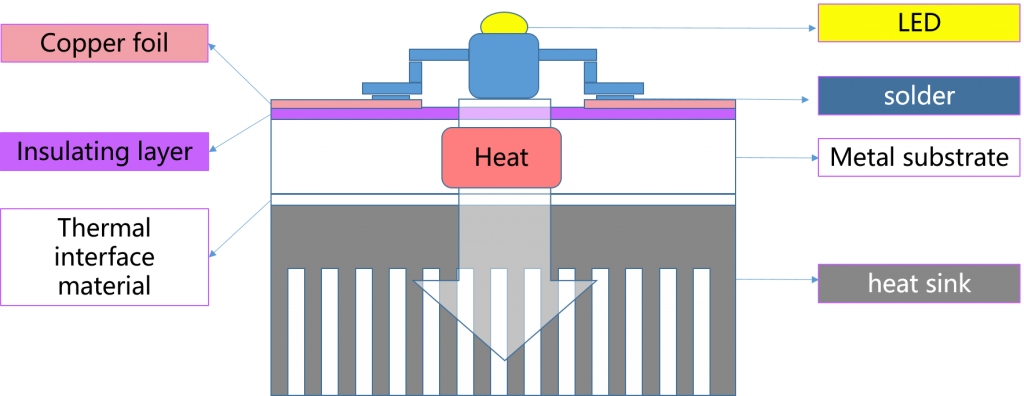
Schematic diagram of heat dissipation of aluminum Core PCB
Common LED PCBs or Aluminum PCBs have front and back sides. The white side is for soldering the LED pins, and the other side is the color of aluminum. Generally, a thermally conductive paste is applied to contact the thermal conductive part. Aluminum PCB is mainly used in LED lamps and audio equipment, power supply equipment, etc. The main advantages of aluminum PCB are fast heat conduction and good heat dissipation performance.
Advantages of Aluminum Core PCB
There are various advantages of aluminum PCBs, some of them are,
Aluminum PCBs are much cheaper than other metal core PCBs. They have higher thermal conductivity as compared to commonly used FR-4 PCBs. In contrast, if you use copper or stainless-steel PCBs, then it will be higher in cost. Thus, you can save money by getting the cheapest type of metal core PCBs. The reason behind the low cost is that aluminum is easily available and has a low cost as compared to other metals used for MCPCBs.
Explore More:
Aluminum is used because of its high thermal conductivity. It can easily dissipate the heat generated by the components on board. It can withstand high temperatures. The dielectric conducts the heat from the components and helps in dissipating the heat. Thus, it protects the components working on the board and can increase life. Moreover, there is no need to use heat sinks. If your PCB needs many heat sinks, then a better option could be aluminum PCB. It could save you money.
Explore More: The Application of Thermoelectric Separated Copper Core PCB in the Field of LED Heat Dissipation
The problem with the FR-4 board is that they cannot retain their shape at high temperatures. The board starts to bend, and it cannot retain its dimensions. On the other hand, the aluminum board can retain the shape under temperature and pressure stress.
Aluminum is environmentally friendly, and there is no harm in using it. It’s according to international standards. It’s 100% non-toxic. It can also be recycled.
Aluminum PCBs are durable. They can withstand wear and tear and extreme temperatures. Aluminum is much stronger than a common FR-4 substrate, and it has a high capability of preventing accidental damages. It can handle more pressure and stress. There is a very low probability of the breakage of the board.
Aluminum has a very lightweight as compared to copper and stainless steel. So, the final product can have less weight.
Aluminum PCB can be quickly assembled using the currently popular surface mount technology, shorten the cycle from product design to production, reduce production costs, and quickly occupy the market
The aluminum-based PCB has an excellent electromagnetic shielding function, which can prevent the radiation and interference of electromagnetic waves and ensure the regular operation of the electronic circuit.
Disadvantages of Aluminum Core PCBs
- Indeed, there are many benefits of Aluminum PCBs, but there are some disadvantages. The disadvantages cannot beat the advantages, but it’s important to discuss them.
- The first disadvantage of the PCB is that its cost is more than FR-4 PCBs. The reason is simple, which is the use of aluminum. If your project can work with normal PCBs, then you should not invest money on aluminum PCBs. It will save you money. But if the project needs a high thermal conductivity, then there is no choice, and aluminum is the next feasible option. The other reason for the high cost is the manufacturing process. The process is a bit more complicated than manufacturing normal PCBs.
- The next disadvantage is the limitation of the layers. You cannot have as many layers as you want for an aluminum PCB. Usually, there is only one layer. But there can be two layers as well. You cannot expect more than two layers in aluminum PCBs.
What Is The Unique Performance Of Aluminum PCB?
- Better heat dissipation and conductivity: Compared with ordinary FR4 PCB, aluminum PCB has excellent heat dissipation performance. For example, Fr4 PCB with a thickness of 1.5mm will have a thermal resistance of 20-22 degrees per watt, while aluminum PCB with a depth of 1.5mm will have a thermal resistance of 1-2 degrees per watt.
- There is no serious problem of thermal expansion or contraction: each substance has its coefficient of thermal expansion. The CTE of aluminum (22ppm/C) and copper(18ppm/C)is quite close. Since aluminum PCBs work well in terms of Thermal dissipation, they do not have severe expansion or contraction issues. They work excellently and are durable and reliable.
- Dimensional Stability: aluminum PCBs show dimensional Stability and stable size. For example, when heated from 30-140 degrees, their size only changes by 2.5%-3.0%.
- Others: Aluminum PCBs can be used in power device surface mount technology. They are valid for use in circuit design because of their performance in terms of thermal expansion of circuit design. They help to prolong product shelf life and product power density. They are also highly reliable. They can help to shrink the overall volume of the product and is also a cheaper option. They show electromagnetic shielding and high dielectric strength.
Aluminum PCB Circuit Board Applications
- The most common use of aluminum PCBs is where high heat dissipation is required. Aluminum can dissipate the heat and omit the need for heat sinks. It can be cost-effective and a reliable option to manage the heat of the board. The heat generated by different components can be quickly dissipated with the help of the dielectric material. Thus, the parts never experience high thermal stress; it increases the life of the elements.
- Nowadays, aluminum PCBs are mostly used for LEDs(LED PCB). It’s primarily used in LED lights, lamps, tube lights, car lights, etc. LEDs dissipate a lot of heat, and they cannot work on common PCBs; thus, they need a metal core PCB.
- Other than LEDs, aluminum PCBs are used in the power supply. They are used to make DC/DC and DC/AC converters. The other applications are in automotive, telecommunications, computers, power modules, and many other sectors.
What Are Aluminum PCBs Used For?

Electronic regulator, ignition, power supply controller, etc.

Switching regulator, DC / AC converter, SW regulator, etc.
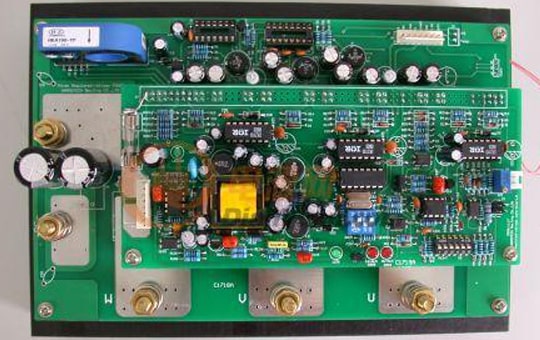
Inverter, solid-state relays, rectifier bridges.

CPU board, floppy disk drive, power supply devices, etc.
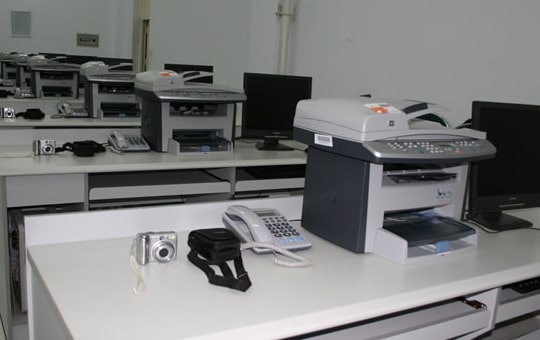
Motor drive, etc.
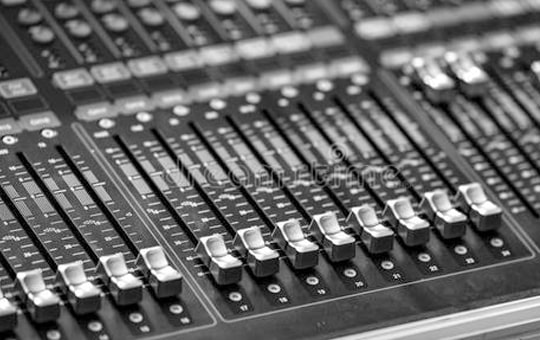
Input, output amplifier, balanced amplifier, audio amplifier, pre-amplifier, power amplifier.

High-frequency amplifier, filtering appliances, the transmitter circuit
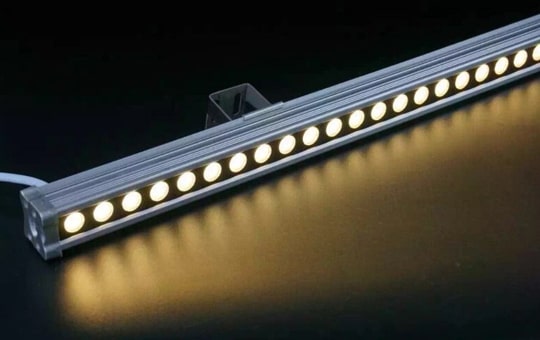
As the advocated promotion of energy-saving lamps, aluminum PCB used in LED lights also begin large-scale applications.
Aluminum PCB Types and Fabrication Service
Aluminum PCB Service
Which type of Aluminum Based PCB is most suitable for my project?
Several types of aluminum PCBs are used in many applications based on their construction and design. However, the primary purpose of all aluminum PCBs is almost the same; providing heat dissipation solutions for applications involving high temperatures.
As a reliable PCB manufacturer, we provide comprehensive aluminum PCB manufacturing services, including led aluminum PCB, aluminum PCB for led, aluminum base PCB, aluminum substrate PCB, flexible aluminum PCB, aluminum clad PCB, aluminum PCB prototyping, aluminum core PCB, aluminum backed PCB, single-sided, double-sided and multilayer aluminum PCB manufacturing and assembly services.

Aluminum PCB Prototype
We can deal with aluminum PCB prototypes and small-volume orders without restricting the minimum order quantity. We offer fast turnaround aluminum PCB prototypes that enable you to go to market early, which can be a significant source of our competitive advantage.
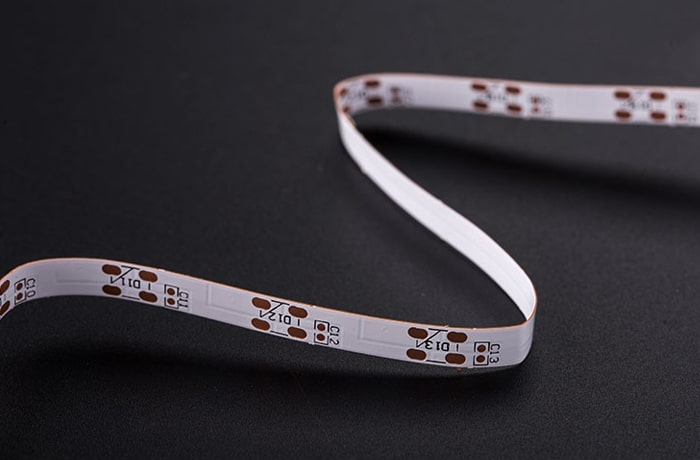
Flexible Aluminum PCB Board
Firstly, Flexible aluminum PCB is a new flexible dielectric developed in the development of aluminum products. It is also a kind of flexible circuit board. Because of the combination of polyimide resin and ceramic filter, it has high flexibility, thermal efficiency, and excellent electrical insulation. When used in aluminum PCB products, the expensive cables and connectors no longer need to be used.
Flexible circuit boards have unparalleled flexibility, so flexible aluminum PCBs can be arbitrarily folded, twisted, or formed in any other desired form.
However, it should be noted that once a specific shape is created, it can no longer be changed like other conventional flexible circuit boards or deform.

Hybrid Aluminum PCB Board
In hybrid aluminum construction, nonthermal material is processed and refined separately before it is applied to the thermal materials with aluminum base.
The most common practice is developing a two-layer or four-layer structure which comprises of FR4 material.
A nonthermal material that is bonded with thermal material and the aluminum base provides rigidity and helps in the dissipation of heat.
This nonthermal bonding is preferred over using all thermal materials because it features less cost and encompasses efficient thermal conductance over regular FR4 products.
No heat sinks or assembly steps are required for the development of this product.
Through-hole components can be easily adjusted using component windows on the aluminum base.
This helps in passing the cables and connectors through the substrate. Also, the seal created by solder fillet eliminates the need for costly adapters
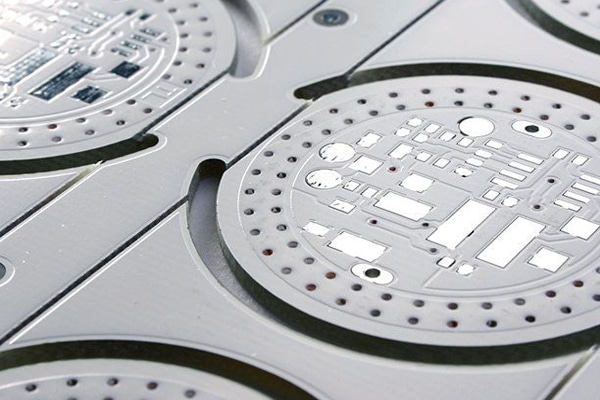
Single Layer Aluminum PCB
The single-layer aluminum PCB has only one side with lines, and the other is smooth aluminum. At present, most aluminum substrate PCBs are single-layer aluminum PCBs. The single-layer aluminum PCB has three layers: the aluminum base plays the role of heat dissipation, the insulating layer plays the role of heat conduction, and the copper layer plays the role of conduction.
The thickness of the single-sided aluminum PCB is 1.0mm, 1.2mm, 1.5mm, 1.6mm, 2.0mm, 3.0mm, 5.0mm, etc.
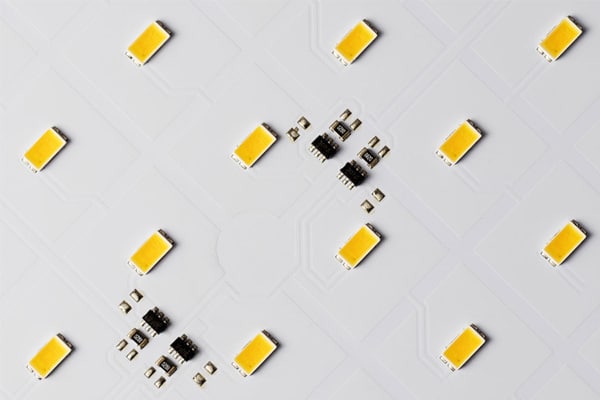
Double-Sided Aluminum PCB
The double-sided aluminum base PCB has two circuit layers and is electrically connected through plated through holes (PTH). The manufacturing process of the double-sided aluminum base is more complex than that of single-layer aluminum-based PCB, and the production cycle is longer than that of single-sided aluminum-based PCB. Therefore, the price of a double-sided aluminum-based PCB is several times that of a single-sided aluminum-based PCB.
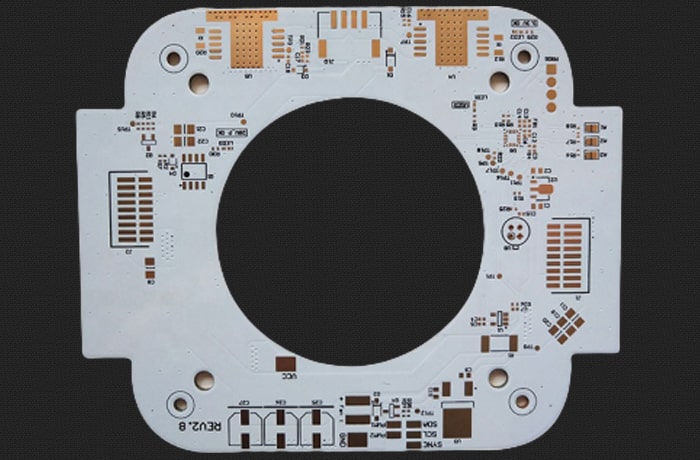
Multilayer Aluminum PCB Board
Multilayer Aluminum PCBs are ubiquitous in power supply products and come with multiple layers of thermally conductive dielectrics.
These materials are beneficial when they are combined with one or more layers of circuitry in which thermally conductive dielectric is buried between the sheets with the help of blind vias, which also act as a signal or thermal vias.
Single-layer construction of these designs is not very active; however, when they come with more elaborate designs, they provide an ideal solution for many applications involving heat dissipation.

Plating Through-Hole Aluminum PCB
When it comes to most complex constructions, a single layer of aluminum is back-filled and pre-drilled with before applying lamination, forming a Core of a multilayer construction.
Thermal bonding materials are then used for laminating the thermal materials on both sides of the aluminum.
Once lamination is done, drilling is applied to the assembly.
To maintain proper electrical insulation, the plated through holes created as the result of drilling must pass through aluminum clearances.

China Aluminum PCB Assembly
JHY is not only a high-quality aluminum PCB manufacturer, but also a comprehensive and reliable aluminum PCB assembly, led PCB assembly, and metal core PCB assembly supplier. We can handle surface mount technology, through hole assembly technology as well as hybrid assembly technology.
Aluminum PCB Manufacturing - How Are Aluminum PCB Manufactured?
The following table presents some of our Aluminum Core materials:
| Items | Performance Index (Measured value) |
|---|---|
| Peeling strength (n/mm) | 1.8 |
| Insulation resistance (ω) | >1*10 g |
| Breakdown voltage (VDC) | >2 k |
| Soakable soldering (°C/m) | 280°C / 260°C, 1 min, no bubble & delamination |
| Thermal conductivity (ω/m-k) | >0.8 |
| Thermal resistance (°C/ω) | < 1.2 |
| Combustibility | fv-o |
| Dielectric constant (1mhz) | 4 |
| Dielectric loss angle (tangent) | 0.03 |
Can the aluminum in the aluminum substrate be replaced with other materials? Such as copper, stainless steel, iron, or silicon steel plates? What kind of metal is used as the PCB substrate, in addition to its heat dissipation performance, the thermal expansion coefficient, thermal conductivity, strength, hardness, weight, surface condition, and cost of the metal substrate must also be considered.
Under normal circumstances, considering conditions such as cost and technical performance, aluminum is the best choice. Available aluminum models are 6061/5052/1060 and so on. If there are higher thermal conductivity, mechanical properties, electrical properties, and other special performance requirements, copper, stainless steel, iron, or silicon steel can also be used as the substrate of the circuit board.
The following are the properties and specifications of materials that can be used for the manufacture of high thermal conductivity aluminum PCB.
| Material | Model | Hardness HB500KgF | Density (g/cm³) | Coefficient of haetconductict (W/mk) | Expansion Coeffcient (1E-6 /K) |
| Aluminum | 1100 | 32 | 2.71 | 218 | 23.2 |
| Aluminum | 5052 | 68 | 2.68 | 138 | 23.2 |
| Aluminum | 6061 | 95 | 2.7 | 155 | 23.2 |
| Red Aluminum | C1100 | 30 | 8.9 | 401 | 16.7 |
| Ceramic | 96% Al₂O₃ | / | 3.8 | 20-30 | 0.6 |
Check our Aluminum core PCB manufacturing capabilities:
| Feature | Capability |
|---|---|
| Quality Grade | Standard IPC 2 |
| Number of Layers | 1- 24 layers |
| Order Quantity | 1pc – 10000+pcs |
| Build Time | 2days – 5weeks |
| Material | Aluminum core (Domestic 1060), Copper core, FR4 covering |
| Board Size | Min 6*6mm | Max 610*610mm |
| Board Thickness | 0.8mm – 5.0mm |
| Copper Weight (Finished) | 0.5oz – 10.0oz |
| Min Tracing/Spacing | 4mil/4mil |
| Solder Mask Sides | As per the file |
| Solder Mask Color | Green, White, Blue, Black, Red, Yellow |
| Silkscreen Sides | As per the file |
| Silkscreen Color | White, Black, Yellow |
| Surface Finish | HASL – Hot Air Solder Leveling |
| Lead Free HASL – RoHS | |
| ENIG – Electroless Nickle/Immersion Gold – RoHS | |
| Min Annular Ring | 4mil |
| Min Drilling Hole Diameter | 6mil |
| Other Techniques | Countersink holes |
| Screw holes |
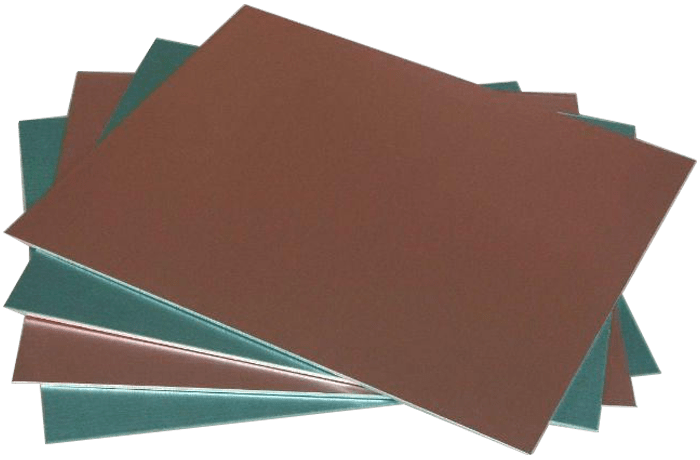
Aluminum PCB Manufacturing Process
The manufacturing process of aluminum PCB with OSP surface finish: Cutting→Drilling→Circuit→Acid/alkaline etching→Solder Mask→Silkscreen→V-cut→PCB Test→OSP→FQC→FQA→Packing→Delivery.
The manufacturing process of aluminum PCB with HASL surface finish: Cutting→Drilling→Circuit→Acid/alkaline etching→Solder Mask→Silkscreen→HASL→V-cut→PCB Test→FQC→FQA→Packing→Delivery.
JHYPCB can provide the aluminum core PCB with the same surface finish process as FR-4 PCB: Immersion Gold / thin / silver, OSP, etc.
Notice
- Put boards in the cage-shelf or separate them with paper or plastic sheets to avoid scratches during transportation of the whole production.
- Using a knife to scratch an insulated layer in any process is not allowed during the whole production.
- For abandoned boards, the base material cannot be drilled but is only marked with “X” by oil-pen.
- Total pattern inspection is a must because there is no way to solve the pattern problem after etching.
- Conduct 100% IQC checks for all out-sourcing boards according to our company’s standards.
- Gather all defective boards together (such as dim color & scratches of the AI surface) to be re-processed.
- Any problem during production must be informed to related technical staff in time to be solved.
- 8. All processes must be strictly operated following requirements.
Learn more about Introduction to aluminum PCB manufacturing process
Aluminum PCB Manufacturer
Why Choose JHY for Aluminum PCB Fabrication?
- China’s leading aluminum PCB manufacturer
- Experienced production team – JHY has been engaged in aluminum PCB production for more than 12 years, and our experienced production team can provide customers with high-quality aluminum PCBs.
- Competitive price – JHY is equipped with a fully automatic PCB manufacturing production line, which can reduce costs through mass production to provide customers with the most cost-effective printed circuit board manufacturing and assembly services.
- Excellent supply chain management – We save costs by centralizing and purchasing raw materials in large quantities, such as aluminum copper-clad laminates, solder mask inks, etc.
- Quick turnaround time – Everything is done in our state-of-the-art PCB manufacturing facility to shorten lead times.
- DFM and DFA Check – Free Pre-production Gerber inspection
- High-quality customer service – JHY provides customers with professional 7*24-hour technical and service support.
- Information Security – We will sign NDA with you to ensure your information and data security.
How To Clean Aluminum Core PCB?
After the Aluminum Core PCB is manufactured, it is necessary to clean off the oil, dirt, dust, rosin, etc., remaining on the board during the processing.
Cleaning metal core aluminum PCBs is a process that requires great care. How to clean an Aluminum Core PCB depends on the type of contamination.
How to remove dust from Aluminum Core PCB?
The following methods can remove dry dust and other pollutants.
- Soft brush. Use a small soft brush very carefully to remove any dirt or dust from the board.
- Compressed air
- Special vacuum cleaner
How to clean oil or rosin on metalcore aluminum substrate PCB?
Wet contaminants are more difficult to clean than dry contaminants such as dust. Fortunately, we have other ways.
- Isopropyl alcohol: Use a tool such as a cotton swab dipped in alcohol to wipe the contaminated area of the circuit board. Make sure you are in a well-ventilated environment when doing this.
- Demineralized water: If you do not have alcohol or do not want to use alcohol, you can choose to use demineralized water instead. It’s important to note that you need to make sure to keep the Aluminum Core PCB dry after cleaning it with demineralized water.
- Special cleaning agent: Please test on the discarded PCB board before using a potent cleaning agent.
Considerations When Cleaning Aluminum Core PCBs
- can not be oxidized;
- The selected cleaning solvent cannot erode the surface of the Aluminum Core PCB.
How To Package, Store, And Use Aluminum PCB?
The front side of the aluminum PCB is white, which is used for electronic weld components such as LED. Aluminum PCB is very susceptible to moisture. Once it is damp, it will turn yellow and black, which will affect the beauty of PCB. Therefore, aluminum PCB needs to be vacuum packaged and stored in a dark and dry environment.
Before packaging aluminum PCBs, a piece of white paper will be placed in the middle of each aluminum PCB to prevent scratches, and the operators need to wear gloves to work.
Aluminum PCB must be used within 48 hours after removing it from the vacuum packaging.
Recommended Reading
Difficulties In Aluminum Substrate PCB Assembly
The excellent heat dissipation performance makes new problems appear in the electronic assembly process of aluminum substrate PCB.
First of all, during manual soldering, the heat dissipation is fast, so the soldering temperature cannot make the solder completely infiltrate. It is difficult to form the alloy layer of the solder joint, which leads to the poor bonding force between the device and the copper-clad layer, and the solder joint is unreliable.
Secondly, the base material of aluminum substrate PCB is metal aluminum alloy. The inherent expansion coefficient of aluminum alloy material is relatively large, so there is a mismatch of expansion coefficient between the two. Strictly speaking, when the expansion coefficient differs by 2ppm/℃, it will affect the reliability of the PCB board.
Verification Of Reliable Soldering Of Aluminum Substrate PCB
As a fundamental principle of circuit board reliability design, selecting the base material for the manufacture of aluminum substrate PCB should consider that the coefficient of expansion (CTE) of the material matches the CTE of the mounted components. If there is a mismatch, compensatory measures should be taken. For the reliability verification after soldering, refer to the soldering reliability test method proposed by the ECSS-Q-ST-70-38C “High-Reliability Soldering of Surface Mounting and Hybrid Assembly Technology” standard to verify the soldering reliability of aluminum-based PCBs.
The standard process welding, pad structure optimization, stress compensation, and other technical measures verify aluminum substrate PCBs. After the components are welded, a comparative test is carried out to analyze and determine the reliability of the technical measures after implementation.
The size of the component directly affects the deformation during the temperature change process of thermal expansion and contraction. Under the action of the thermal environment, the larger the component, the more significant the impact on reliability.
Aluminum PCB Vs. Fr4 PCB, How To Choose?
Compared with the traditional FR-4, the aluminum base PCB can minimize thermal resistance. Therefore, the aluminum-based PCB has excellent thermal conductivity; compared with the ceramic-based PCB, the mechanical properties of the aluminum substrate PCB are incredibly excellent.

Advantages Of Aluminum Base PCB Compared With FR4 PCB
In addition to good heat dissipation performance, aluminum PCB also has the following advantages:
- Comply with RoHS environmental protection requirements
- More suitable for SMT process
- Higher current carrying capacity
- Highly effective treatment of thermal diffusion in the circuit design scheme, thereby reducing the operating temperature of the module, prolonging the service life, and improving the power density and reliability;
Reduce the assembly of heat sinks and other hardware (including thermal interface materials), reduce product volume, and reduce hardware and assembly costs; optimize the combination of power circuits and control circuits;
Replace fragile ceramic base PCB to obtain better mechanical durability.
Compared with the ordinary FR-4 sheet, the aluminum substrate PCB has the most significant advantage in carrying a higher current. Like FR-4, the circuit layer uses copper foil as the wire for connection. Compared with the traditional FR-4, the aluminum substrate PCB can carry a higher current with the same thickness and line width.

The core technology of the aluminum PCB is the insulating material in the middle, which mainly functions as adhesion, insulation, and heat conduction. The insulating layer of the aluminum PCB is the most significant thermal barrier in the power module structure. The better the thermal conductivity of the insulating layer, the more conducive to the diffusion of heat generated during the operation of the device, and the more conducive to reducing the operating temperature of the device, to achieve the purpose of increasing the power load of the module, reducing the volume, extending the life, and improving the power output. While satisfying good thermal conductivity, it must also have high-voltage insulation capability.
The Difference Between Aluminum Substrate And FR-4 Sheet
The most significant difference between aluminum-based copper-clad laminates and conventional FR-4 copper-clad laminates lies in heat dissipation. Compared with aluminum-based copper-clad laminates with a thickness of 1.5mm, the former has a thermal resistance of 20~22 ℃, and the latter has a thermal resistance of 1.0~2.0. ℃, the latter is much smaller.
Because the general FR-4 has the problem of thermal expansion, that is, high temperature will cause the thickness and flatness of the plate to change, especially the thermal expansion in the thickness direction of the plate, which affects the quality of the metalized holes and circuits. The main reason for this is that the thermal expansion coefficient of the raw material of the board is different: the thermal expansion coefficient of copper is 17×106cm/cm℃, and the base material of the FR-4 board is 110×106cm/cm℃. The thermal expansion coefficient of the aluminum substrate is 50×106cm/cm°C, which is smaller than the general FR-4 board and closer to the thermal expansion coefficient of copper foil. This helps to ensure the quality and reliability of the printed circuit board.
FR-4 PCB board is suitable for general circuit design and general electronic products. The aluminum core PCB is ideal for circuits with special requirements. Such as thick-film hybrid integrated circuits, heat dissipation of power circuits, heat dissipation and cooling of components in circuits, large-scale substrates that ceramic substrates are difficult to handle, and courses that cannot solve reliability with ordinary heat sinks.
Aluminum clad PCB has high mechanical strength and toughness, which is better than FR-4 board. For this reason, large-area printed circuit boards can be manufactured on aluminum substrates, and heavy components can be installed on such substrates.
From comparing the aluminum core PCB and the FR-4 PCB board, the wire fusing current is significantly improved due to the high heat dissipation of the metal substrate, showing the aluminum Clad PCB’s high heat dissipation characteristics from another angle. The heat dissipation of its aluminum substrate is related to its insulating layer thickness and thermal conductivity. The thinner the insulating layer, the higher the thermal conductivity of the aluminum-backed PCB (but the lower the voltage resistance). To ensure the performance of electronic circuits, some components in electronic products need to prevent electromagnetic wave radiation and interference. The aluminum base PCB can act as a shielding plate to shield electromagnetic waves.
Under general conditions, the withstand voltage value of the aluminum substrate CB is determined by the thickness of the insulating layer. The fight voltage value of the aluminum substrate PCB is generally about 500v. If you need to test the withstand voltage value of the LED fluorescent lamp’s aluminum base PCB, it is only sufficient to perform a high-voltage test on the input port shell. UL and CE certification value should be 2500V, 3C certification should be 3750V.
JHYPCB: A Excellent Aluminum PCB Manufacturer
Aluminum PCBs are excellent for dealing with high heat-dissipating circuits. They can dissipate heat efficiently and increase the life components and the board. Aluminum can withstand high temperature and pressure stress. It’s durable and long-lasting.
JHYPCB is a well-known manufacturer of PCB and PCBA. You can get quick turnaround PCB fabrication service. We are capable of manufacturing all types of PCBs, including aluminum PCB. Our strict quality control can ensure excellent quality. We are compliant with RoHS and ISO 9001:2008. For more information and details, feel free to contact us.
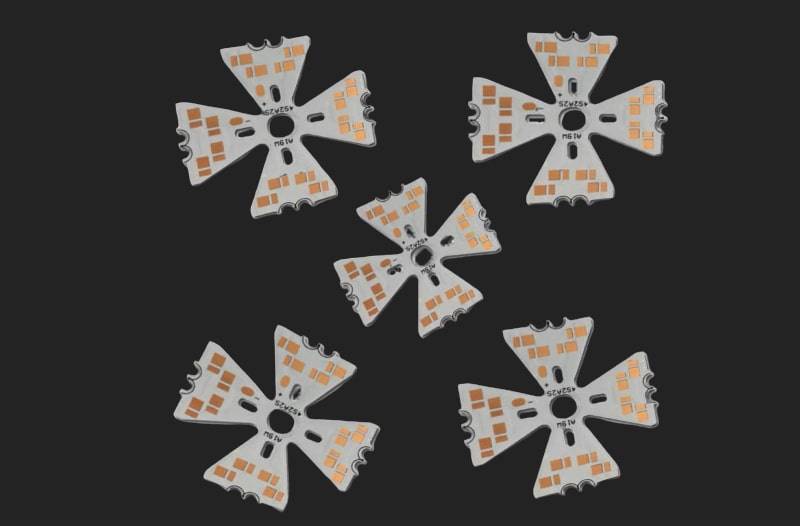
Aluminum PCB FAQs
Aluminum-clad PCBs are generally stored in a dark, dry environment. Most aluminum core PCBs are prone to dampness, yellowing, and blackening. Commonly, Aluminum PCB should be used within 48 hours after opening the vacuum package.
Aluminum-based PCB is a metal-based copper clad laminate with a good heat dissipation function. According to different applications, aluminum-based PCB can be divided into single-sided aluminum-based PCB, 2 layer aluminum PCB, and multilayer aluminum PCB. The thermal conductivity of aluminum-based PCB is between 1.0 and 2.0, and the thermal conductivity of aluminum-based PCB is related to its insulating layer.
The most significant difference between ceramic-based PCB and aluminum-based PCB is the difference in material and structure. Ceramic PCB uses ceramic as the base material. In terms of design, ceramic PCB does not require an insulating layer because of the excellent insulation performance of the ceramic itself.
At present, ceramic PCBs on the market are mainly divided into aluminum nitride ceramic PCBs and alumina ceramic PCBs. The thermal conductivity of alumina ceramic PCBs is 15-31, and aluminum nitride PCBs are between 135-175.
In short, the thermal conductivity of ceramic PCB is better than aluminum-based PCB, and the core technology of aluminum-based PCB is the insulation layer. The better the thermal conductivity of the insulation layer of aluminum-based PCB, the more conducive to the heat dissipation generated when the components are running.
With the same specifications, the price of ceramic circuit boards will be at least 5 times higher than that of aluminum PCBs.
Aluminum-based PCB welding skills
Because the LED aluminum-based PCB has good heat dissipation capacity, manual soldering is relatively tricky. Therefore, some soldering skills are critical in the soldering process. The following talks explicitly about the main items and abilities in the aluminum substrate soldering process.
1. The temperature of the welding zone should be controlled at 255℃±5℃. The welding time should be between 10S~15S because the heat sink is a copper foil of thermal conductivity material. The thermal expansion parameters of the metal layer composed of aluminum, copper, or iron The thermal expansion parameters of the high thermal conductivity materials of the layers are very different. When the temperature is too high or the time is too long, the brutal force will occur due to the other thermal expansion parameters of the three, which will cause the heat sink to bubble or delamination.
2. When using a manual soldering iron to solder aluminum PCB, you must pay attention to the temperature control during the soldering process. Generally, the temperature should be controlled at 260℃±5℃, the time should be held at about 3 seconds, and the constant temperature must be used when soldering. For soldering iron soldering, you must strictly abide by the relevant specifications and systems of the soldering operation when soldering. Do not solder during the soldering process when the soldering iron temperature is not enough, and do not loosen the soldering iron tip too quickly during soldering. Do not solder multiple times; otherwise, the pad may fall off. When soldering aluminum PCBs with a large area, it is recommended to use additional processing tools to heat them before soldering.
3. When starting to solder all the pins, add solder to the tip of the soldering iron, and apply flux to all the pins to keep the pins moist. Touch the end of each pin of the chip with the tip of a soldering iron until you see the solder flowing into the pin. When soldering, keep the tip of the soldering iron parallel to the soldered pin to prevent overlap due to excessive soldering.
4. After soldering all the component pins, soak all the nails with flux to clean the solder. Suck off the excess solder was needed to eliminate any short circuits and overlaps. Finally, use tweezers to check whether there is false soldering. After the inspection is completed, remove the solder from the circuit board, soak the harrowing brush with alcohol and wipe it carefully along the pin direction until the solder disappears.
Yes, sure. The most significant advantage and function of aluminum-based PCB is heat dissipation. The heat generated by the power amplifier circuit board will be very much, so using aluminum as the substrate of the printed circuit board is the right choice.
PCB design software has nothing to do with what kind of material is used for PCB production. Therefore, we can use Protel99, DXP, CAD, AltiumDesigner 10, etc. It should be noted that when designing aluminum PCB, the line width is generally not less than 0.2mm, and the spacing is not less than 0.5mm.
For more PCB design software, here is a detailed introduction, and download link is provided.
The insulation layer is the core technology of aluminum PCB, which mainly plays the functions of bonding, insulation, and heat conduction. The aluminum PCB insulation layer is the most significant thermal barrier in the power module structure. The better the heat conduction performance of the insulating layer, the more conducive it is to the diffusion of heat generated during the operation of components. The more conducive it is to reduce the operating temperature of elements to improve the power load of the module, reduce the volume, prolong the service life and enhance the power output.
Aluminum PCB uses aluminum as the substrate material instead of the standard FR-4 fiberglass board as the substrate for PCB manufacturing. We know that the movement of charged particles will generate a lot of heat, and aluminum has excellent thermal conductivity. Therefore, when the heat is transferred to the aluminum PCB, it can effectively dissipate it. This layer is also called the dielectric layer.
Aluminum PCBs are mainly divided into three categories.
- Universal Aluminum PCB: the dielectric layer comprises epoxy glass fiber pre-preg.
- High Thermal-Conductive Aluminum PCB: the dielectric layer comprises an epoxy resin. The resin used must have high thermal conductivity.
- High-frequency Aluminum PCB: the dielectric layer comprises polyolefin or polyimide resin glass fiber pre-preg.


